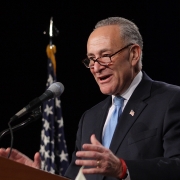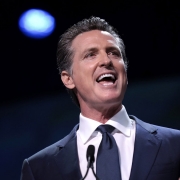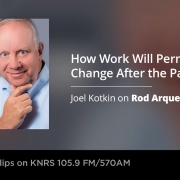Is Congress Ready to Invest in Regional Economies?
By: Alan Greenblatt
In: Governing
A few parts of the country have made out like bandits in recent years. In the decade between the Great Recession and the pandemic plunge, 90 percent of the job growth in technology and innovation sectors occurred in just five major metropolitan areas. In any given year, roughly 80 percent of the nation’s venture capital funding flows to just three states: California, Massachusetts and New York. The pandemic didn’t change that.
The United States is less a land of opportunity than a nation with pockets of opportunity, suggest MIT economists Jonathan Gruber and Simon Johnson in their book Jump-Starting America. “We increasingly rely on a small set of superstar cities located on the coasts to drive our innovation economy,” they write. “Meanwhile, much of the rest of the country has missed out.”
There’s now serious interest in Washington in doing a better job of spreading the wealth around. A bipartisan proposal called the Endless Frontier Act would devote $100 billion over 10 years to research and development funding, including $10 billion that would go toward building up a new set of tech hubs across the nation.
“We have so much untapped potential throughout the country,” said Republican Sen. Todd Young of Indiana. “We have a number of people who aren’t fully in the game, people whose talents aren’t being harnessed, people who don’t live on the coasts, who don’t live in major metro areas like New York or Silicon Valley or Austin or the Research Triangle in North Carolina.”
Young is the lead co-sponsor of the Endless Frontier Act, along with Democratic Senate Majority Leader Chuck Schumer of New York. There are even more ambitious plans than theirs being presented. President Biden has proposed spending $20 billion to bolster new tech hubs, while a competing Senate bill calls for $80 billion.
“If this is well implemented,” Young said, “we’ll see generations of talent able to cycle through these tech hub locations, to make sure we’re firing on all cylinders as a country.”
The Endless Frontier Act faces its first test on Wednesday, when it will be considered by the Senate Commerce Committee. An earlier markup of the bill had to be postponed when it attracted 200 amendments, many concerned with the question of where exactly the money would be directed.
With the potential for billions in federal investment going to particular metropolitan areas, there’s naturally a lot of interest among senators in seeing that the funds head toward their own states. There’s also resistance from senators from rural states who don’t see much likely upside for their constituents.
“If you’re in Alabama, you might win this lottery,” says Robert Atkinson, president of the Information Technology and Innovation Foundation, which is promoting the expanded tech hub concept. “But there are places where it’s not really possible. Wyoming is not going to win one.”
Young and the bill’s other sponsors are looking to address these concerns. The whole thing may well be rewritten on Wednesday to guarantee tech hubs are sprinkled throughout each region overseen by the U.S. Economic Development Administration, while also directing more money to smaller markets.
This is the usual approach in Washington — making sure legislation creates enough winners to leave everyone happy. It’s sometimes derided as the “peanut butter problem” — money gets spread evenly all over, but it can be spread too thin to do much good.
That approach won’t work when it comes to building up new centers that can compete in the knowledge economy, Atkinson says. There has to be concentrated federal investment in a limited number of places that already have good bones in place — research universities and existing economic clusters — to have realistic hopes of creating hubs that will lure subsequent private investment.
“We need to get a few places that are so successful that companies around the world want to be there,” he says.
Picking Winners
There’s a persistent argument that the government has no business picking winners. The feds have certainly put money into companies and industries that have not paid off. The most famous recent example is Solyndra, a failed solar panel company that procured $535 million worth of federal loans under the Obama administration before going belly-up.
Industrial policy — the whole idea that the federal government can direct growth — has many doubters. “It’s really got to be locally driven,” says Joel Kotkin, an urban studies scholar at Chapman University. “They’ve got their act together internally, whether it’s Fargo or Fayetteville or Des Moines. I can’t see why the federal government should be in the business of picking one locality over another.”
Read the rest of this piece at Governing.
Homepage photo: Mobilus in Mobili via Flickr under CC 2.0 License.





 Ted Eytan, used under CC 2,0 License
Ted Eytan, used under CC 2,0 License Gage Skidmore, used under CC 2.0 License
Gage Skidmore, used under CC 2.0 License

 Mike Dunn, CC 2.0 License
Mike Dunn, CC 2.0 License